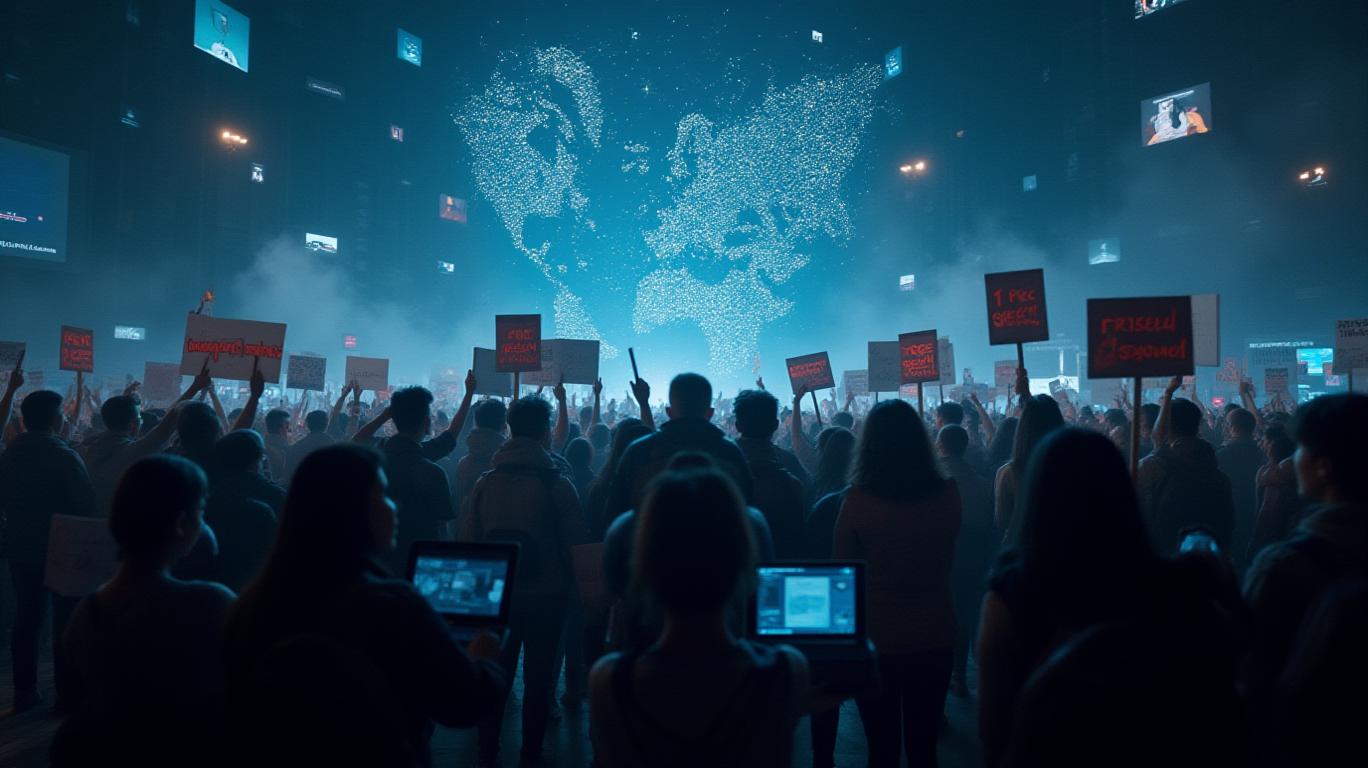AInvest Newsletter
Daily stocks & crypto headlines, free to your inbox
AI technology has been rapidly advancing, with its computational power increasing by a factor of 10 every one to two years since 2010. This exponential growth has raised significant concerns about the potential for AI-driven censorship and control of public discourse. Corporations worldwide have ranked privacy and data governance as their top AI risks, but censorship has not been a major concern for them. However, AI's ability to process millions of data points in seconds makes it a powerful tool for content moderation and information control. Large language models (LLMs) and content recommendations can filter, suppress, or mass share information at scale, posing a threat to free speech and open communication.
In 2023, Freedom House highlighted that AI is enhancing state-led censorship. In China, the Cyberspace Administration has incorporated censorship strategies into generative AI tools, requiring chatbots to support "core socialist values" and block content deemed undesirable by the communist party. Chinese AI models, such as DeepSeek’s R1, already censor topics like the Tiananmen Square massacre to spread state narratives. Freedom House concluded that democratic policymakers and civil society experts should establish strong human rights-based standards for both state and non-state actors that develop or deploy AI tools to protect the free and open internet.
In 2021,
San Diego found that AI algorithms trained on censored datasets, such as China’s Baike, associated the keyword ‘democracy’ with ‘chaos.’ In contrast, models trained on uncensored sources associated ‘democracy’ with ‘stability.’ This underscores the impact of training data on AI outcomes. In 2023, Freedom House’s ‘Freedom on the Net’ report found that global internet freedom fell for the 13th consecutive year, with AI playing a significant role in this decline. Twenty-two countries have laws requiring social media companies to employ automated systems for content moderation, which could be used to suppress debate and demonstrations. Myanmar’s military junta, for instance, used AI to monitor Telegram groups and detain dissidents based on their posts. Similar actions were taken in Iran, Belarus, and Nicaragua, where governments sentenced individuals to draconian prison terms for their online speech.Freedom House found that at least 47 governments used comments to sway online conversations towards their preferred narratives. In the past year, new technology was used in at least 16 countries to sow the seeds of doubt, smear opponents, or influence public debate. At least 21 countries require digital platforms to use machine learning to delete political, social, and religious speech. A 2023 report warned that AI-generated deepfakes and misinformation could undermine public trust in democratic processes, empowering regimes that seek to tighten control over information. In the 2024 US presidential elections, AI-generated images falsely implying Taylor Swift endorsed Donald Trump demonstrated that AI is already manipulating public opinion.
China offers the most prominent example of AI-driven censorship. A leaked dataset analyzed in 2025 revealed a sophisticated AI system designed to censor topics like pollution scandals, labor disputes, and political issues. Unlike traditional keyword-based filtering, this system uses LLMs to evaluate context and flag political satire. Researcher Xiao Qiang noted that such systems “significantly improve the efficiency and granularity of state-led information control.” A 2024 report accused the NSF of funding AI tools to combat ‘misinformation’ on Covid-19 and the 2020 election, finding that the NSF funded AI-based censorship and propaganda tools. A 2025 report discovered that DeepSeek’s R1 model includes censorship filters at both the application and training levels, resulting in blocks on sensitive topics.
In 2025, a survey found that 83% of US adults were concerned about AI-driven misinformation, with many showing concerns about its free speech implications. AI experts interviewed in the survey said that AI training data can unintentionally reinforce existing power structures. Addressing AI-driven censorship requires better reporting to reduce fear-driven calls for censorship. Creating an open-source AI ecosystem is of the utmost importance, meaning companies should disclose training dataset sources and biases. Governments should create AI regulatory frameworks prioritizing free expression. If we want a human future, instead of an AI-managed technocratic dystopia, the AI industry and consumers need to build up the courage to tackle censorship.

Quickly understand the history and background of various well-known coins

Dec.02 2025

Dec.02 2025

Dec.02 2025

Dec.02 2025

Dec.02 2025
Daily stocks & crypto headlines, free to your inbox
Comments
No comments yet